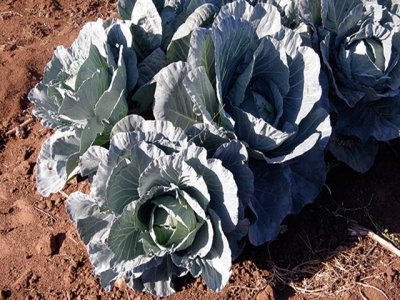Understanding nitrogen

Certain elements are essential for plant growth, so it stands to reason that if any of these are in short supply, the plant’s development will be affected.
The effect of nitrate leaching. The area close to the sprinkler receives more water and the nitrogen leaches out.
However, one element stands out above the rest in this regard: nitrogen (N). The problem is not that N is more important than other elements, but its supply and availability vary greatly. It can be here today and gone tomorrow. Nitrogen can be regarded as an ‘accelerator’ of the fertiliser nutrients, as it governs speed of growth, or vigour. In its absence, growth will cease. Nearly 80% of the air we breathe consists of nitrogen in its gaseous form, N2.
Only certain free-living soil organisms have the ability to extract nitrogen from the air and make it available to plants. It is common knowledge that legumes have rhizobium bacteria attached to their root system which can execute this function and share the converted nitrogen with the host plant. In exchange, the plant provides other nutrients to the bacteria in a relationship called symbiosis where both gain from the association.
There are other soil organisms that can extract N2 from the air; one is a bacterium found in Brazil. This can supply sugarcane with the equivalent of one bag of LAN/ plant/month.
Value of the soil’s organic content
Scientists have long struggled to quantify the amount of nitrogen produced by these and other organisms under varying conditions. But what is beyond doubt is that this is another reason to increase the organic content of soil. Nitrogen can also
be provided through rain – lightning converts atmospheric N2 into ammonia, which is brought to earth in the raindrops. The resulting amount of N is not usually significant, but seems to be enough to stimulate algae in a swimming pool and turn the water green after a thunderstorm.
Nitrogen occurs in two forms in the soil – ammonia and nitrate. It is important to understand their respective roles as this will affect management practices.
Ammonia
The ammonia form of nitrogen is positively charged and thus attracted to clay particles and humus, which carry a negative charge. Ammonia is ‘adsorbed’ (as opposed to ‘absorbed’, where a substance enters another medium). Plants can take up ammonia and even convert nitrate to ammonia. The proviso is that the ammonia has to be in the soil solution, where the roots can extract it easily. Roots do not select what they want from the soil; they merely absorb what is dissolved in the soil solution.
In a hydroponic solution, there is no negatively charged medium to attract the positively charged ammonia. The ammonia is thus in the soil solution and so is freely available to the plant. Plant roots also produce exudates to stimulate certain species of microbes that make specific elements available to the plant. Some plants require more of certain elements and this is one way in which they ensure that they obtain the correct balance of elements.
Nitrate
In the soil, the ammonia is converted into nitrate by soil bacteria that specialise in this function. The speed with which this conversion takes place depends on the number of bacteria in the soil; it takes longer in barren soil with a low organic and bacteria content. The conversion can take days to weeks, depending on the conditions. It is important to remember that the microbes which convert ammonia to nitrate can only do so at a soil temperature above 10°C. This means that in winter, when the temperature is too low, the ammonia will remain in this form until the temperature rises.
Every year, hundreds of farmers in South Africa who grow crops in cool areas in winter cannot understand why their crops are not growing properly. Knowing that they have applied fertiliser in the ammonia form, they rule out a lack of N as a possible reason, even though the symptoms seem to indicate that this is the problem.
Related news
 Marketing and presentation of your carrot crop
Marketing and presentation of your carrot crop As with most commodities, presentation of the product has a disproportionate influence on the price received.
 Positive growth for potato industry
Positive growth for potato industry The area is well-known for its citrus and potatoes, which seem to occupy all of the limited, open flat spaces available.
 Growing baby carrots
Growing baby carrots Almost everything that applies to growing ‘normal’ carrots falls away when you plant for the baby carrot market.